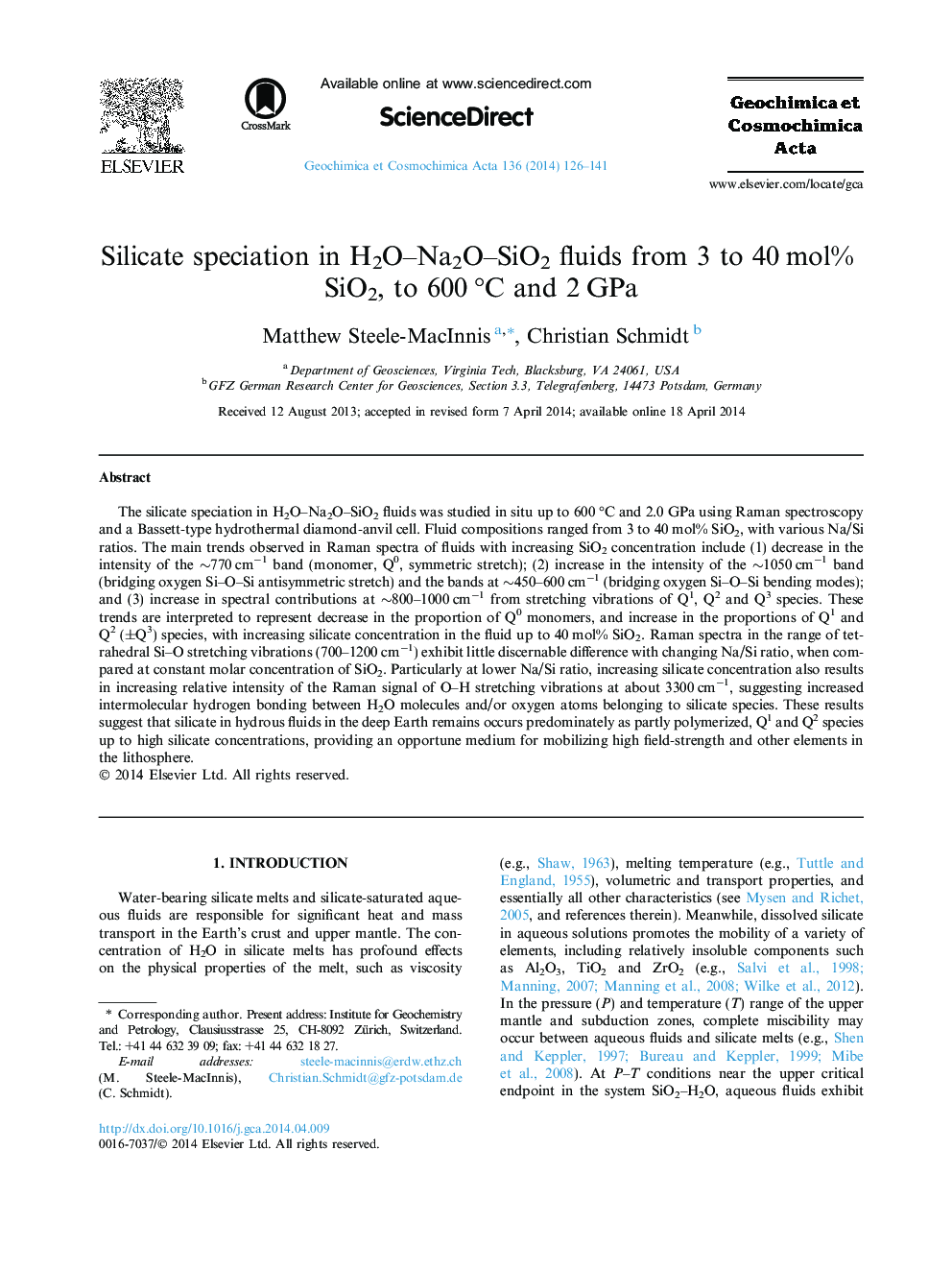| Article ID | Journal | Published Year | Pages | File Type |
|---|---|---|---|---|
| 6438603 | Geochimica et Cosmochimica Acta | 2014 | 16 Pages |
Abstract
The silicate speciation in H2O-Na2O-SiO2 fluids was studied in situ up to 600 °C and 2.0 GPa using Raman spectroscopy and a Bassett-type hydrothermal diamond-anvil cell. Fluid compositions ranged from 3 to 40 mol% SiO2, with various Na/Si ratios. The main trends observed in Raman spectra of fluids with increasing SiO2 concentration include (1) decrease in the intensity of the â¼770 cmâ1 band (monomer, Q0, symmetric stretch); (2) increase in the intensity of the â¼1050 cmâ1 band (bridging oxygen Si-O-Si antisymmetric stretch) and the bands at â¼450-600 cmâ1 (bridging oxygen Si-O-Si bending modes); and (3) increase in spectral contributions at â¼800-1000 cmâ1 from stretching vibrations of Q1, Q2 and Q3 species. These trends are interpreted to represent decrease in the proportion of Q0 monomers, and increase in the proportions of Q1 and Q2 (±Q3) species, with increasing silicate concentration in the fluid up to 40 mol% SiO2. Raman spectra in the range of tetrahedral Si-O stretching vibrations (700-1200 cmâ1) exhibit little discernable difference with changing Na/Si ratio, when compared at constant molar concentration of SiO2. Particularly at lower Na/Si ratio, increasing silicate concentration also results in increasing relative intensity of the Raman signal of O-H stretching vibrations at about 3300 cmâ1, suggesting increased intermolecular hydrogen bonding between H2O molecules and/or oxygen atoms belonging to silicate species. These results suggest that silicate in hydrous fluids in the deep Earth remains occurs predominately as partly polymerized, Q1 and Q2 species up to high silicate concentrations, providing an opportune medium for mobilizing high field-strength and other elements in the lithosphere.
Related Topics
Physical Sciences and Engineering
Earth and Planetary Sciences
Geochemistry and Petrology
Authors
Matthew Steele-MacInnis, Christian Schmidt,
